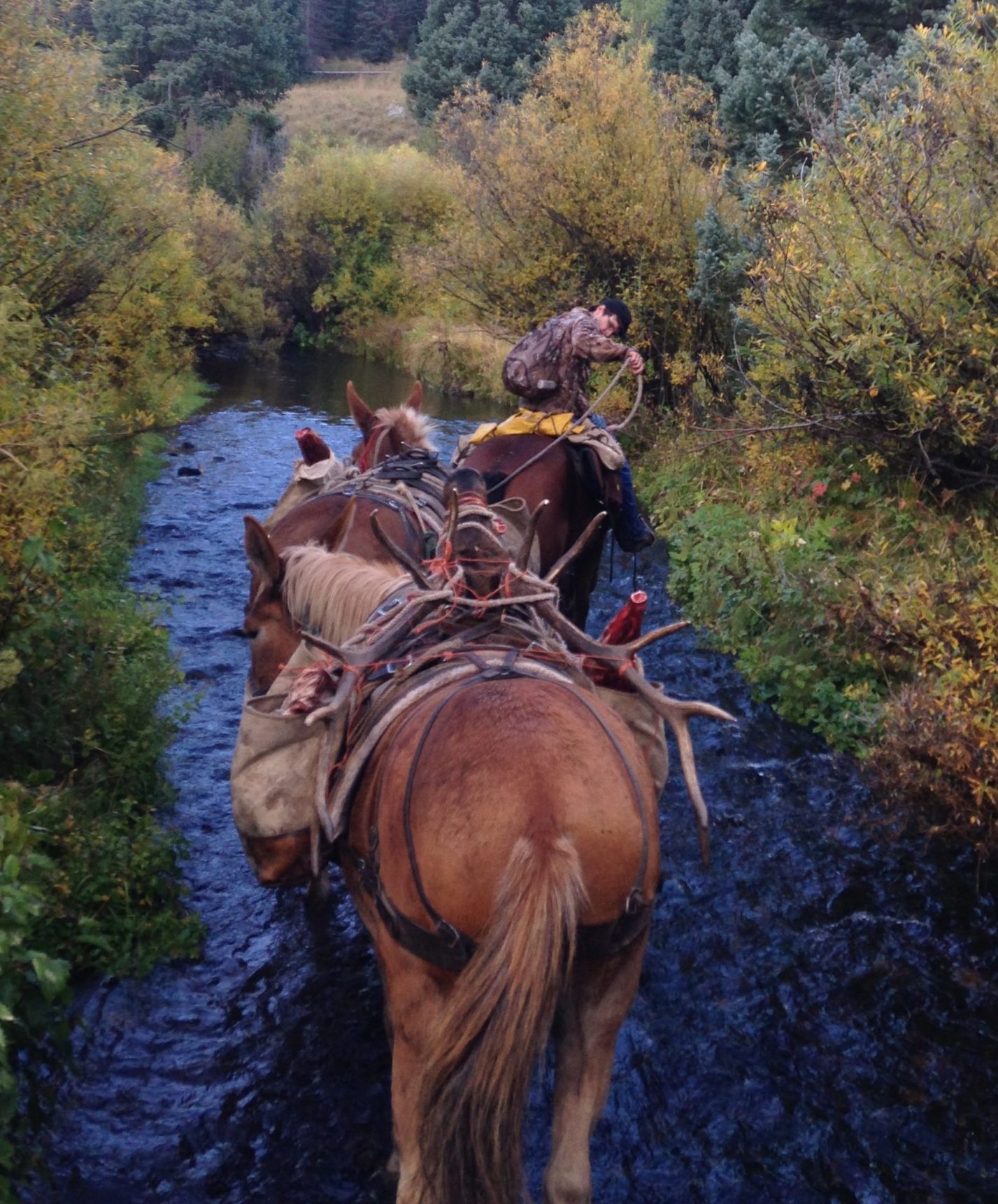Success Rates Are Meaningless
Harvest statistics for public land elk hunting are thrown around the campfire as if they mean something. However, what tells the real story is the distribution of the elk being killed on public land. This is the secret that state game departments aren’t publishing – the same roughly 10% of the hunters are harvesting 80-95% of the bulls each year. Without exaggeration, some hunters are 10-15 times more successful than the overall population of elk hunters. So, the right question is, “How do you become a part of this group?”.
Identifying these metrics became an obsession of mine over the years. It’s an empirical question, and I was blessed to have lived through a great dataset. Over a decade of guiding and outfitting in public wilderness areas, I witnessed thousands of successful and unsuccessful public land hunters. It turns out that the differentiating factors of the consistently high success group are on a short list, one that any hunter can achieve. I’m convinced that if you embrace the following four points – you will increase your public land elk hunting success manyfold.
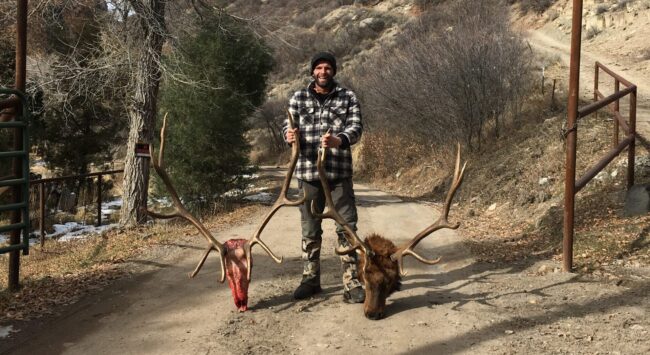
#1 Know a Specific Area and Know Specific Elk
Almost all highly successful elk hunters are hyper focused on a single unit or a small set of adjacent units. Many of them are further focused on a couple drainages within this localized area. On the contrary, your average public land hunter – the one who rarely kills anything – unconsciously has become a geographic generalist over their hunting career. They are always looking for the next honey hole. They constantly jump from unit-to-unit, region-to-region.
I’m not saying there aren’t hunting quality differences between public land units – there are. However, you gain way more from learning a single area in-depth versus trying to find a new area every year. Keep in mind that public land units that can be hunted consistently, the over-the-counter and low point ones, are managed by game departments for similar hunting experiences. I contend that spending five years in a marginally “worse” unit is much better than spending five years, in five different units.
First, hunters intimately familiar with a location know how to change their strategy when the game changes. Pun intended. These hunters don’t have plan A and B, they have plan A through Z. Over the years they have cataloged each spot where they experienced elk. They already know the logistics of checking those areas and can efficiently cover each spot.
Second, hunters familiar with an area know what I call the “condition-based elk behavior” of that area. If there are snow accumulations, they know exactly where the elk descend to. They also know how much snow it takes to make that happen. If it’s been a dry year – they know where the elk must rut. If it’s been an exceptionally wet year – they know the fringe areas that elk can only use in those conditions.
The other big conditioned-based elk behavior these hunters understand is what the elk do when faced with hunting pressure. The low-success hunter will scout out a high, alpine basin with elk in it and return for opening day. When he finds that a different hunter has dropped his camp in the center of the basin, blowing the elk out, the low-success hunter chalks the hunt up as a total failure. He departs for a completely different area. Now, on the contrary, the highly successful hunter in the same situation draws on his experience. That hunter drops down into the hellhole he knows those high basin elk have fled to.
Last, the real elk killers know the elk they are hunting. What? Isn’t an elk, an elk? It sounds a bit woo-woo, but I’ve found elk to have strikingly different behavior in different regions.
Many old-timer outfitters and guides will tell you that these differences are past down by the lead cows. This isn’t well supported with science on prey species like elk, but something is going on. It’s the reactivity of game animals – they develop patterns in areas due to the unique stimuli in that local. Much of these differences are subtle enough that us humans have a hard time even noticing them. Different feed sources, variations in hunting pressure, a strip of private land, or a small pack of wolves – all can change many behavioral aspects of the elk within a region.
Highly successful hunters leverage their understanding of these unique behaviors in the local elk. It could be the ability to catch elk moving at times during the day that outside hunters would never suspect. It could be catching elk at way lower altitudes than any rational hunter would think to check. The options are endless when you know how your elk behave.
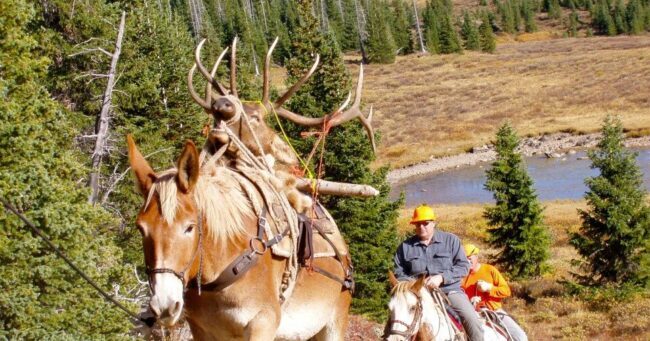
#2 Control the Controllable
The second trait of hunters who harvest 90% of the elk is that the non-hunting related variables in their life are controlled while they are out hunting. This isn’t something most folks think about. The distractions of our lives, outside of the hunt, weigh heavy on a hunt’s results.
Successful public land hunters are not harassed by family, wife, kids, and employers about going on hunts or while they are on hunts. Many less successful hunters constantly battle with these outside influences. At times, these distractions have the direct effect of forcing hunters to quit early on hunts. I saw this dozens of times as an outfitter and guide. The distraction is so intense, the hunter feels the need to go deal with it directly.
More common and with more subtle results, these distractions induce a steady stream of stress during hunts. As a result, the hunter doesn’t sleep as well, lacks focus and is less effective overall. For all these reasons, it’s important that hunters have an understanding with people, within reasonable constraints, that when they are out hunting their focus will be on the actual hunt.
Along the same lines, highly successful hunters have tuned logistics. These are non-hunting related sources of stress during your hunts if you don’t have them figured out beforehand. Consistent elk hunters use the same camp locations each year, rent the same cabins, and rely on proven camp gear and vehicles. Finding a new camp spot at midnight, not knowing if your vehicle can get down the main route in the unit or looking for hotels last minute – all of these detract from a hunter’s effectiveness.
There are already many non-controllable variables for us to contend with during elk hunts. Make it a mantra to control all the controllable ones, and you will have better results.
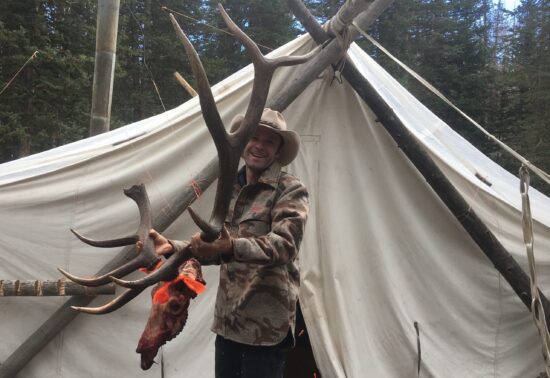
#3 Public Land Elk Hunting is a Skillset – Treat it Like One
I took the Private Pilot test when I had 41 hours of flying time, the bare minimum legally allowed and about half what it takes the average person. The thing is – I was below average on all the relevant talents. I had the hand-eye coordination of a one-eyed moose. My mother was forced to drive me to the flight exam, because I’d failed my driver’s test twice! So, what made it possible? The same thing that allows some elk hunters to get so good, so quick: choosing to actively learn and iterating on what you have learned as soon as possible.
Before every flight lesson, I either wrote down what I wanted to work on, or at least reviewed it in my mind. Elk hunters should do the same before every day of hunting. “Today, when we spot elk feeding, I’m going to key in on what they are eating.” “Today, I’m going to pay close attention to how the wind changes.” You will see a massive improvement if you consciously focus on aspects of your hunting skillset.
When I made a hard landing or some other flying fumble, I always analyzed what went wrong. Do the same for any botched stalk or missed shot during a hunt. What are the factors that led to scaring those elk? What cover did I use? Was it the wind or did they see me? Did I take the time to get a good rest before the shot? If you go through these things thoroughly after the mistake occurs, you can actively plan for the next situation. That’s how a hunter or anyone creating a skillset builds the brain pathways to proficiency.
Now, this part is going to make some of you uncomfortable. Yet, it’s the most important. I took a flying lesson almost every day of my life, until I took the exam. This allowed me to iterate on everything I learned the day before and incrementally build my knowledge. This is a proven tactic across learning sports, trades, computer programming… essentially every skill. Elk hunting is not the exception. Actively practice, analyze, then practice again as soon as possible. If your hunting is limited to a five-day hunt, once per year, you have decades ahead of you before you reach any level of proficiency.
If you learn something today, then wait 358 days to try it again, you are going to have to relearn 99% of it. That’s how our brain works. The shorter you can make the in-between interval, the more knowledge you will retain. In elk hunting, this means you need to go on multiple hunts each Fall season if you want to climb the learning curve. I know this is impractical for some folks, but it’s still a key factor that differentiates the highly successful public land hunter.
Now, if it is impractical for you to go on multiple elk hunts each Fall, there are other ways you can iterate on what you are learning as a hunter. Throughout the year take time to practice glassing, shooting, reading the wind and all the other relevant skills of an elk hunter. This means weekend trips to the mountains and dedicating time and effort throughout the year. Even dedicating time to other outdoor activities that have crossover skillsets can help you bridge these gaps between hunts.
To wrap up the flying analogy and to take on the biggest objection I hear on this front, here’s a fact for you: The cheapest way to become highly skilled at something is to follow the above pattern. I flew every day because I had a limited budget. I could only afford 40-45 hours of flight time. That meant not wasting time relearning things. The only option was to fly consistently. The same goes for elk hunting. If the goal is to become a highly successful elk hunter, three hunts over one Fall is a lot cheaper than three hunts over three Falls.
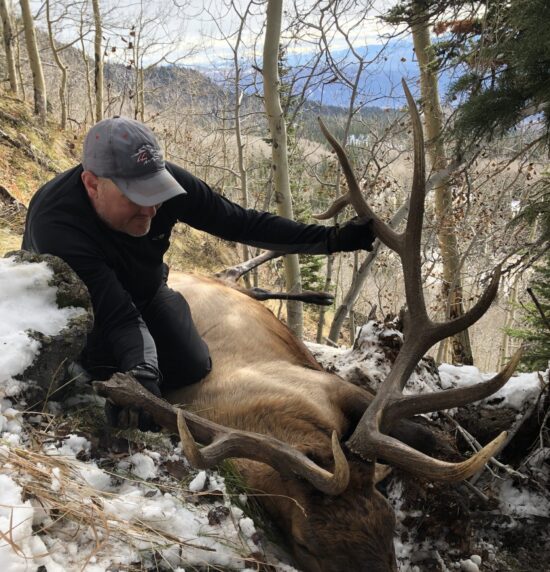
#4 Embrace the Moment
I’m not going full Tony Robbins here, but psychology is a huge factor when it comes to becoming a highly successful public land elk hunter. You are going to be uncomfortable, be stressed out and have a multitude of reasons to quit on these hunts. Getting through those challenges is commonplace for the most successful hunters in the elk woods.
The best hunters choose to “embrace the moment” as a means of getting through the hard times on elk hunts. I mean this in two different ways. First, in the more traditional sense, you must look at the hunt as something beyond the harvest of the animal. There needs to be value for you in the challenge, spending time away from the world’s distractions and taking part in something that is inherent to us as humans. If you don’t do this, your rational brain will conclude that public land elk hunting is a horrible way to get your next serving of protein. This will result in quitting hunts early and missing out on opportunities to learn.
The second way to think about embracing the moment is to remember that it only takes one moment for a hunt to completely reverse its course. This can happen an hour in, or it can happen during the last 15 minutes of a twelve-day backpack hunt. When a bull steps out in a meadow, right in shooting range, we immediately forget all the insane hardships we have gone through to get to that point. Constantly reminding yourselves that this moment could be around the next bend, will get you through to the end of many of your hunts.
Regardless of the conditions and challenges of an individual hunt, the folks that harvest most of the elk almost never quit early.
Making these four differentiating factors a part of your future public land elk hunting will undoubtedly increase your chances of success. None of them are easy to implement. But everyone knows, there isn’t much worth doing that comes without challenge.
Sign up to get our new posts as they are published!


